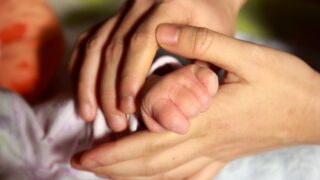As a parent, you want the best for your child, and you may be concerned if you notice that their head is misshapen. This condition, known as plagiocephaly, can be worrying, but there are steps you can take to manage it. In this guide, we’ll discuss what plagiocephaly is, how to prevent it, and what to do if you suspect your child has it.
What is Plagiocephaly?
Plagiocephaly, also known as flat head syndrome, occurs when a baby’s head develops a flat spot either on one side or the back of the head. This can happen when a baby spends a lot of time lying on their back, which is recommended to reduce the risk of Sudden Infant Death Syndrome (SIDS). While plagiocephaly is not usually harmful to a baby’s health, it can cause concern for parents and may lead to cosmetic issues if not addressed.
Preventing Plagiocephaly
While it’s important for babies to sleep on their backs to reduce the risk of SIDS, there are steps you can take to prevent plagiocephaly. First, be sure to give your baby plenty of supervised tummy time when they are awake. This helps to strengthen their neck and shoulder muscles and can reduce the likelihood of developing a flat spot. You can also vary the position of your baby’s head while they are sleeping by alternating which end of the crib they sleep on or by using a specially designed pillow or positioning aid to encourage head movement.
Managing Plagiocephaly
If you notice that your baby has a flat spot on their head, it’s important to talk to their pediatrician. In some cases, the pediatrician may recommend physical therapy or exercises to help your baby develop head control and strengthen their neck muscles. Additionally, they may suggest repositioning techniques to encourage more even head growth. In some cases, a specially fitted helmet may be recommended to help reshape your baby’s head.
Support and Resources
Dealing with plagiocephaly can be stressful for parents, but it’s important to remember that you are not alone. There are support groups and resources available to help you navigate this journey. Reach out to other parents who have gone through similar experiences, and don’t hesitate to ask for help from friends, family, or healthcare professionals.
Conclusion
Plagiocephaly can be a worrying condition for parents, but with the right support and resources, you can successfully manage it. By taking steps to prevent plagiocephaly and seeking help if you notice any flattening of your baby’s head, you can ensure that your child develops a healthy head shape and grows into a happy, thriving toddler.
FAQs
Q: Can plagiocephaly cause long-term issues for my child?
A: In most cases, plagiocephaly does not cause long-term health issues. However, it’s important to address it early to prevent any cosmetic or developmental concerns.
Q: Will a helmet be uncomfortable for my baby?
A: While it may take some time for your baby to adjust to wearing a helmet, most babies adapt quickly, and the helmet is designed to be lightweight and comfortable.
Q: What can I do to help my baby if they need a helmet?
A: Your pediatrician and the specialist fitting the helmet will provide guidance on how to care for your baby’s skin and keep them comfortable while wearing the helmet.
[ad_2]



















コメント